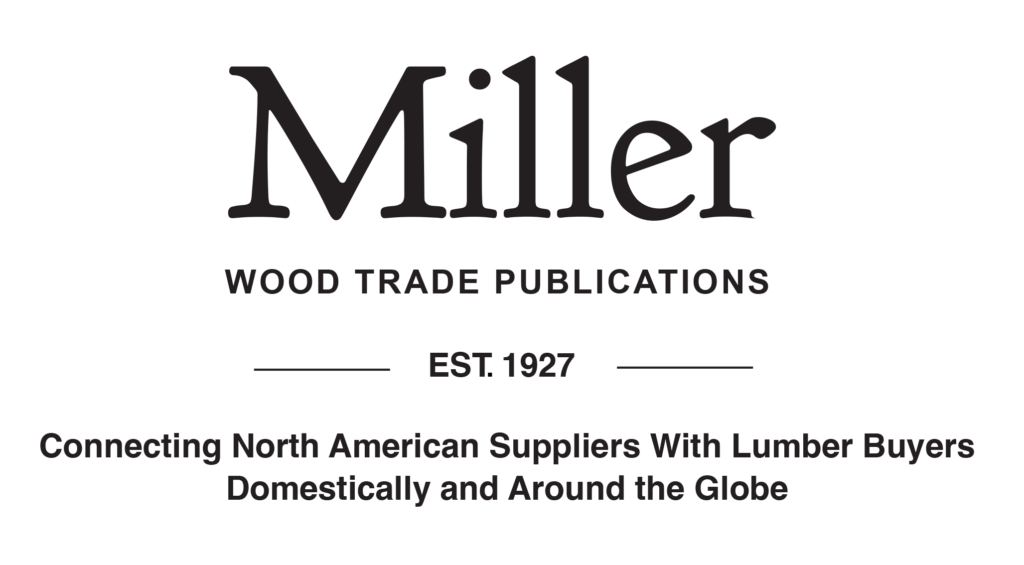The Northeast Raises Concerns About Chinese Conflicts
The concerns about the tariff situation have affected the Northeastern hardwood lumber market, causing hesitation in buying and shipping the lumber. Red Oak was specifically named as a specie that many are struggling to move. Despite these issues, lumber spokesmen remain hopeful due to the expected increase in business in upcoming months.
A lumber source in Pennsylvania stated that they are “doing okay” but there is a “lot of uncertainty in the air and it’s hard to figure out a plan to move forward. The domestic markets are well but the exports are uncertain right now. There are a lot of moving parts.”
Species they work with include “Red and White Oak, Hickory and Hard and Soft Maple,” he said. “Mainly FAS with some Common grades. The Maples are selling well right now. Poplar is selling well. Red Oak, too.”
His customers include distribution yards and 50 percent of their business is exporting. They “mainly” export to China but business has been thrown “off” a little due to the tariffs.
It has been “busy” in New York with a “lot of quoting but not a bunch of PO’s,” stated a lumber spokesman who believes that it is “due to availability in the market.”
It is better than six months ago, but the tariffs have “caused some turmoil,” he said.
They offer “Ash, Basswood, Cherry, Hard and Soft Maple, Poplar, Birch, Walnut and Red and White Oak. We are doing all grades. 4/4 through 12/4 on some species. Hard and Soft Maple up to 16/4. 8/4 is our bread and butter; it’s what we target. Red Oak still moves the best.”
As for his clients, he said, “We do a lot of exporting. Domestically, we do sell to, distribution yards and a few manufacturers. The manufacturers I talk to are doing okay; they have a steady order file.”
“Well, the China loads have all stopped. The other loads that are out, they’re out. I don’t think we plan on doing any splitting tariffs or anything like that, so I think it is just kind of business as usual. I think a lot of it is going to go through Vietnam in place of China. We do some business with Canada and our relationship with them is good for the most part.”
After the 4th of July, a lumber source in West Virginia expects the market to become hectic, but this increase in energy will revolve around what companies did the first six months of the year.
The market is “pretty good, except the Red Oak really dropped off recently due to tariff scares,” explained a lumber source from West Virginia. “I think everybody is waiting to see what’s going to happen but, in the meantime, nothing is happening.”
Business is “probably as good or better but it is more uncertain than it was six months ago. Some of the industrial lumber seems to be working along. I’m optimistic. I think it’s going to be okay.”
They handle Poplar, Maple, Red Oak, Walnut, Hickory, Beech and Birch in addition to “some Cherry but that business has been so poor for so long and we don’t have many logs. We recommend people to leave it because some day the style will change, and Cherry will be a popular species again. The Poplar business (in which they handle 8/4, 10/4 and 12/4), is good because it is the easiest to sell and is bringing a good price. It is not as good as it was during the pandemic, but it is a lot better than it used to be. The Maple business seems to be good, too. White Oak seems to have topped out, so there’s a little wavering around on that but it is still good.”
Grades they handle for Red Oak include No. 1 Common, FAS and Better, which is “moving but with the Red Oak, that all stopped for who knows, maybe a week or two. Suddenly, one customer said that their containers on the water were cancelled by the Chinese. The politics are a problem. We were doing some 6/4 Red Oak until recently and also in the Soft Maple,” for which, “No. 2 and No. 3 Common prices aren’t very good but the No. 1 Common and Better is good. It all moves.”
He listed Beech as an “oddball species” because “that’s not a big species in this part of the world but up North, it is. I don’t know if there was some deficit because they couldn’t get the European Beech, which is pretty much identical. Everything is moving here.”
He said the Birch “moves because it’s a white wood and that’s where the style still is.” As for Walnut, they don’t “get any Walnut to speak of- maybe half a dozen logs a year. We’d have to go into the Shenandoah Valley in West Virginia or out into Ohio to accumulate any amount of it. We don’t pay any attention to it. If we get a few logs, we sell them to one of the log yards.”
They have a distribution yard on “the coast” that they sell to in addition to concentration yards with “dry kilns and containers who sell domestically.”
“I like selling to the people that are manufacturing a product because they are cutting the lumber up and when it is gone, they need to buy more. If we ship to these yards and they get loaded up with it, it might sit in their dry storage and when it gets filled up, they quit buying. Then, it gets tough.”
Regarding what his customers had to say about the marketplace for their products, he said “they don’t mention too much because they’re afraid I’ll bump the price up on them. But if they’re calling looking for lumber, that tells me they don’t have any or enough because we don’t have enough manufacturing in this state, so when people are looking for industrial lumber, it means that there isn’t any available close to home.”
As for tariffs, he would “prefer to deal domestically and they’re changing this tariff business all the time. The Chinese have always subsidized their manufacturers and now they’re going to subsidize their importers, and we wouldn’t know the difference. I don’t think they’re going to want a whole bunch of people unemployed over there.
They’re going to have to do something, and we’ll see where it shakes out.”
They are “pretty well staffed,” and they have “a few different people” they can use for trucking needs. He just needs to “give enough heads up when it’s going to be ready and since we’re moving all green lumber, I want to make sure we have the truck as soon as the load is done.”
He also shared his thoughts on when the hardwood lumber market would get “hectic” and why. “It will start getting hectic after the 4th of July, which will depend on what businesses did the first six months of the year. Traditionally, even when I had a circle mill 25 years ago, we did 75 percent of our business between the first of January and the 30th of June because people were buying inventory to get ready for the building season.
Once the holidays, like the 4th of July, deer season and Thanksgiving and Christmas hit, things slow down. When we first started keeping track of it, only 25 percent of business was done in the last six months. It’s just the way it is. So far, they’ve thinned out the number of sawmills to the point that I think business is going to be steady and good, even if it isn’t as steady because there aren’t as much of us around as there used to be.”










